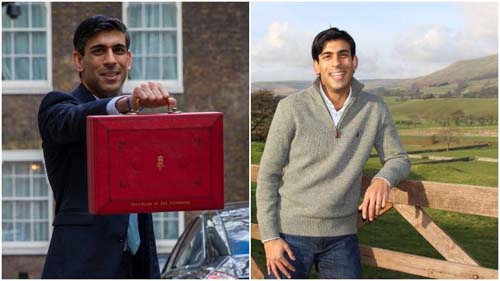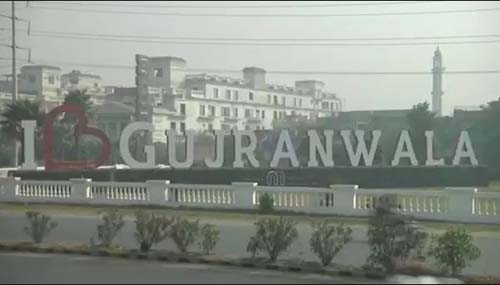
Rishi Sunak’s roots: When the family called Pakistan home
Waqar Mustafa – Khaleej Times
London: The UK’s new Prime Minister, Rishi Sunak, is a scion of a Hindu-Punjabi family that migrated to Kenya for work in the 1930s from the food, wrestling, and industrial centre of Gujranwala – about an hour’s drive from Lahore, the capital of Pakistan’s Punjab province.

The Sunaks, a Hindu-Khatri family, had lived in Gujranwala for ages. Rishi’s paternal grandfather Ramdas Sunak left Gujranwala in 1935 to work as a clerk for the British colonialists in Nairobi, Kenya, where indentured labourers from India worked on sugar, cotton, and tea plantations, and rail construction projects.
Suhag Rani Sunak, his wife, moved to Delhi from Gujranwala with her mother-in-law before travelling to Kenya in 1937. They had six children: three sons, including Rishi’s father Yashveer Sunak who was born in Nairobi in 1949, and three daughters.
The area was annexed by the British in 1849 and ruled by them until Pakistan’s independence in 1947. Edward H. Lincoln was the deputy commissioner of Gujranwala, then in British India, when the Sunaks moved to Kenya.

Under Mughal rule, Gujranwala was a village and part of the revenue division Eminabad pargana, which is now situated in its southeast. Then, it lay on the Gujranwala and Amritsar road.
When Maharaja Ranjit Singh rose to power, Gujranwala changed from a village into a city. Singh himself was born in Gujranwala, and he made it his headquarters before his occupation of Lahore in 1799.
Lincoln, the Gazetteer of Gujranwala in 1935 – the year Ramdas Sunak left it – dubs the district ‘where electricity has been introduced recently’ as ‘fairly densely populated that has adequate rainfall and canal and well irrigation’.
“Gujranwala, the headquarters of the district, is situated on the main line of railway connecting Lahore and Peshawar. It is very fertile and well-wooded, and there are numerous fruit gardens in and around the town. The city once had a wall around it with 11 gates, but there has been a very considerable expansion and the walls do not now exist.”
“The Jats form the chief agricultural tribe and are Muhammdans [Muslims], Sikhs and Hindus. Muhammdans predominate. The non-agricultural owners are the Khatris, Aroras, Kashmiris and others,” says the British-era document.
“The Hindus and Sikhs who are not agriculturists in the towns are generally dependent on trade. The richer Hindus and Sikhs, even when they live upon the land, prefer residing in towns. The Muhammadan population of the towns consists largely of artisans and others dealing with industries.”
It sees ‘a marked increase of [the] population [of] Gujranwala because of its industrial development, especially in brass, copper and bronze utensils, and iron safe almirahs.’
Several large dwellings, the architecture of which is essentially Sikh, still stand in the Gujranwala district – especially in Eimanabad.
On the music scene back then, the document says the following: “Owing to the cheapness of gramophones, local musical talent is daily getting scarcer. Every well-to-do house has a gramophone. A few have ‘radios’.”
“There is brisk lorry traffic and camels and donkeys chief means of transport,” says the 1935 document, adding that with considerable motor and lorry traffic Gujranwala has almost become a suburb of Lahore.
“Ghee is imported from [the nearby] Gujrat district chiefly. Sugar is imported from seaports. Hardware is imported from Karachi, Bombay, and Jamshedpore for local manufactures. Ice is also exported.”
“In 1935, there were 20 advocates practicing — 11 Hindu, 5 Muslim and 4 Sikh. There were, in 1934-1935, 354 schools of all kinds in the district, with 33.381 pupils including 6,741 girls under instruction at 78 schools.”
“The language spoken by the bulk of the population is Punjabi.” And this is the language the Sunaks spoke.
About the Sunak clan, the Khatris, the Gazetteer says: “The wonderful facility which the Khatri has of adapting himself to his environment has brought them to the front, rather in the civil than the military line under the British rule. They are not bad zamindars; they cultivate little themselves, and with some exceptions are not harsh to their tenants.”
In the census of 1931, the Khatris numbered 28,039 in the ‘principally Muhammadan district’: meaning that ’71 per cent of the population [were] following the Muhammadan religion’.
Ruchika Talwar, Digital Content Editor with Australia’s multicultural and multilingual broadcaster, too has some distant memories of Gujranwala to share. Talwar comes from a Khatri clan that lived in and around Gujranwala until the 1947 partition, about a decade after Sunaks had left it.
“My paternal grandfather, Mathura Das Talwar, and his family, lived in Gujranwala and had a very successful construction business. Also a Pahlwan or wrestler, he was known as Shah Ji. My grandmother’s maternal grandparents lived in between Wazirabad and Gujranwala,” Talwar says in a telephone interview from Australia.
Asked where the Khatris lived, Talwar recalls her chats with her grandma who passed away last year, and says: “I guess they were living around the local Hindu temple and Gurdwara Rori Sahib, in Eminabad near Gujranwala.
She says her grandma often talked about swimming in the canal with watermelons thrown around to cool them as young children. “My great-grandfather had such a solid reputation as a businessman of Gujranwala that when they migrated to Amritsar after the partition, someone spotted him at the railway station a few months down the line.
This person had once borrowed money from him in Gujranwala for some urgent need. He then loaned Rs 10,000 to my great-grandfather who returned it in one month. That was a princely sum at the time.
“When my great-grandfather asked him why he wanted to offer him money at a time as fraught as the partition, he said, ‘Shah ji, you were a guarantor of Gujranwala, and if anyone needed some help, it was certain that under your guarantee, a loan would never go bad. Now is my turn to return the favour’. And that’s how our family business was re-established after partition,” she says.
I jokingly ask if the Sunaks were her relatives. Laughter follows and she says: “I might claim them now that he’s become prime minister of the UK!”
